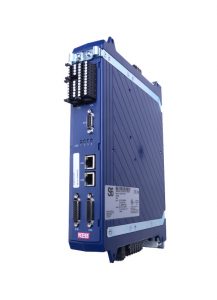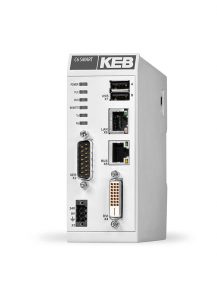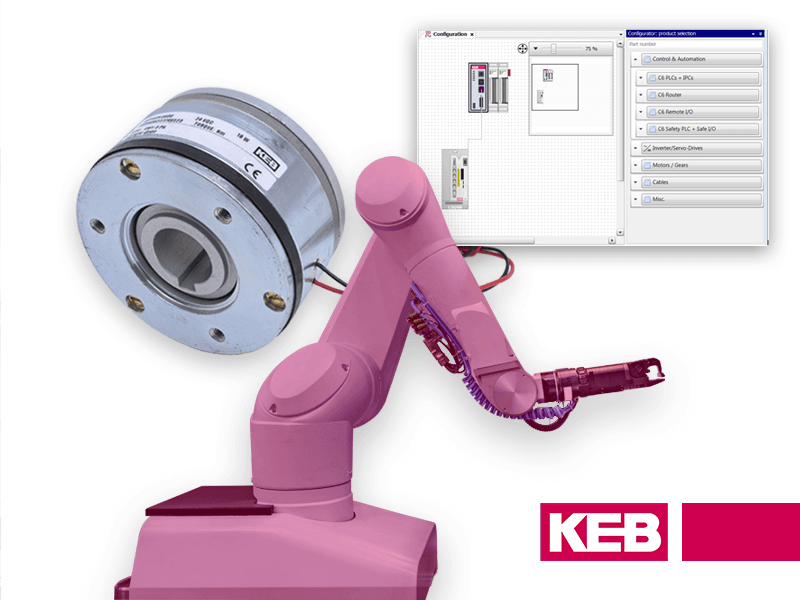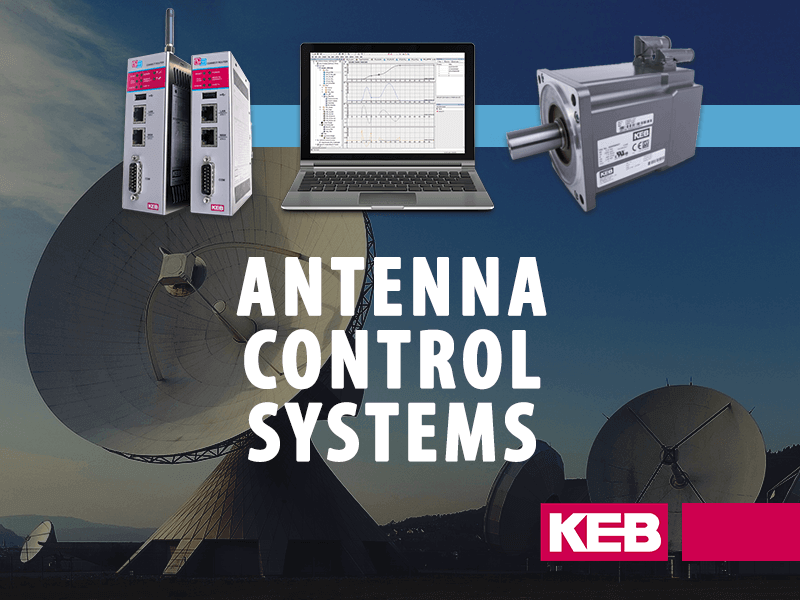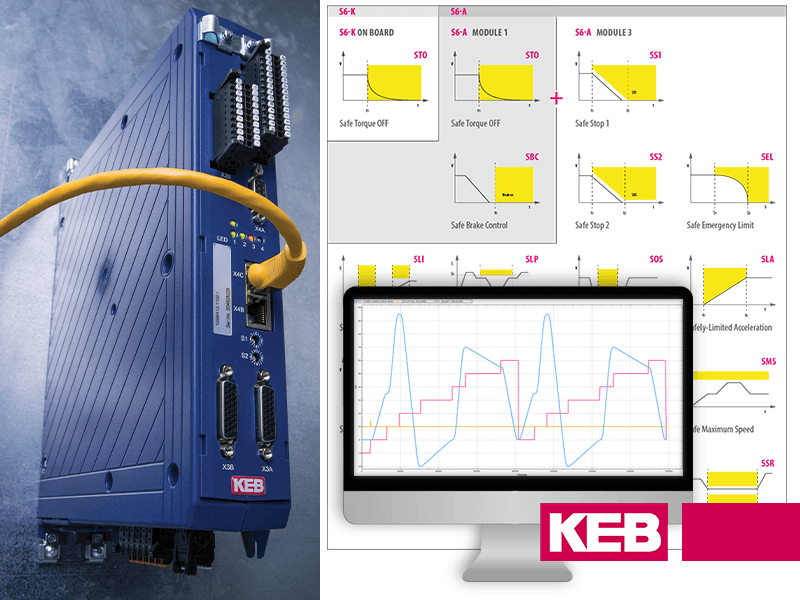Automation for Flight Simulator Applications
KEB’s controls, VFDs, and motors have been used in a variety of flight simulator applications globally. We continue to see success in these applications based on the KEB product’s combination of flexibility, control, and motor shaft performance. This post will highlight some of the products and features that we commonly implement across our flight simulator applications.

Flexible and Scalable Drive Solutions
KEB VFDs were created and designed to operate in either open or closed-loop applications using real-time communication or classic analog and digital control. Our F5, F6, and S6 series of VFDs allow for optimal shaft performance for three-phase induction motors, permanent magnet motors, torque motors, linear motors, and also spindle motors. This allows our customers to apply our hardware to a variety of application configurations with some easy parameter changes.
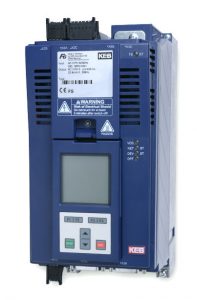
KEB VFDs are easily controlled in coordinated motion control applications using real-time communication protocols like EtherCAT and Powerlink. Additionally, other commonly used industrial protocols like EtherNet/IP and ProfiNet are supported. The F5 is a modular drive platform with a swappable operator/communication interface. The newer F6 and S6 VFDs feature native Ethernet communication supporting the leading industrial Ethernet protocols. This gives machine builders maximum flexibility and allows them to support different control platforms with a single drive platform.
Optimized Machine Performance
KEB offers high-performance drives for both 230V and 480V voltage classes. Switching frequencies up to 16 kHz is possible. Reducing audible VFD noise is a concern that is often brought up when discussing flight simulator applications. Drives operating at lower switching frequencies result in fewer heat losses, thereby allowing for larger rated currents. However, sometimes the added audible noise at lower frequencies is not acceptable. Switching at higher frequencies (e.g., 8 kHz or 16 kHz) results in nearly silent operation from the drive and motor. In general, we find that 8 kHz is usually the sweet spot between audible noise levels and component cost.
Related Article: Reducing Audible Noise in VFD Applications
One interesting function we commonly utilize in flight simulator applications is the drive’s UPS Function. The UPS Function is used when the simulator loses electrical power during operation. This could cause the user to become trapped in the simulator. Without the mains power, a VFD needs a way to operate with a battery or Uninterruptible Power Supply (UPS) to bring the simulator back to its home position.
The UPS function is built into KEB VFDs, so the integration with the simulator control is seamless. In the F5, the UPS function can be triggered by a programmable digital input. In the F6 and S6 series, the UPS function is controlled through software limits, allowing you to set a lower limit than the standard DC bus level of 240VDC, enabling operation on battery power or UPS. Once in a safe position or home position, the machine can then be shut down until the power is returned. We have seen that many competitor drives have hardcoded under-voltage error levels, so they are unable to operate under power loss without a very large DC power supply and 3 phase output.
When applications require moving in a 3D space and have coordinated motion using multiple axes, the KEB C6 Smart EtherCAT controller is a great addition to any system. It allows you to control each axis via advanced profiles with fast scan times. This leads to tight control and synchronization between the motor axes. The KEB C6 Smart is an EtherCAT master, making for easy implementation with our F5, F6, or S6 series VFDs in either induction or servo run applications. The C6 Smart programs in KEB’s Combivis IDE include pre-developed libraries of control operations. It gives customers a head start and a base on which they can develop control of the VFDs with complex movement profiles.
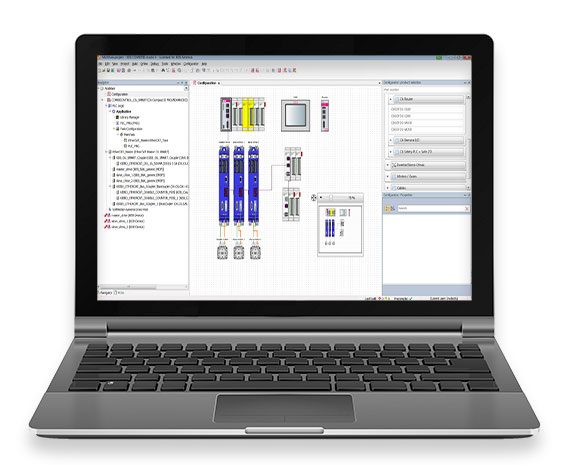
Motor Technology – The Heart of the Machine
KEB has run flight simulator applications in which both AC induction and AC permanent magnet/synchronous motors were used. As servo motors become more commonplace and the price gap between induction motors and servo motors narrows, servomotors are increasingly being used. Synchronous motors, or servo motors, can offer many benefits that make them preferred compared to AC induction motors.
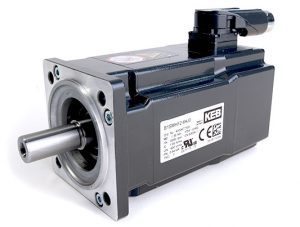
First off, they have a higher power density relative to the AC induction motors, meaning that you can achieve higher torques out of a smaller package. Commonly, servo motors will produce around 25-50% more torque than a similarly sized induction motor. This makes servo motors ideal for applications in which you may have some space constraints, or are trying to keep the total system as light as possible. They also can achieve full torque at zero speed continuously with encoder feedback. This is possible with induction motors, but it is much more limited.
Lastly, they have faster response times than induction motors, making complex movements smoother and easier for dynamic machines such as flight simulators.
KEB – Your Motion Control Partner for Flight Simulators
Do you want to learn more about our controls, drives, or motors for your application? Contact a KEB Sales Manager or Applications Engineer today!
Let's Work Together
Connect with us today to learn more about our industrial automation solutions—and how to commission them for your application.
